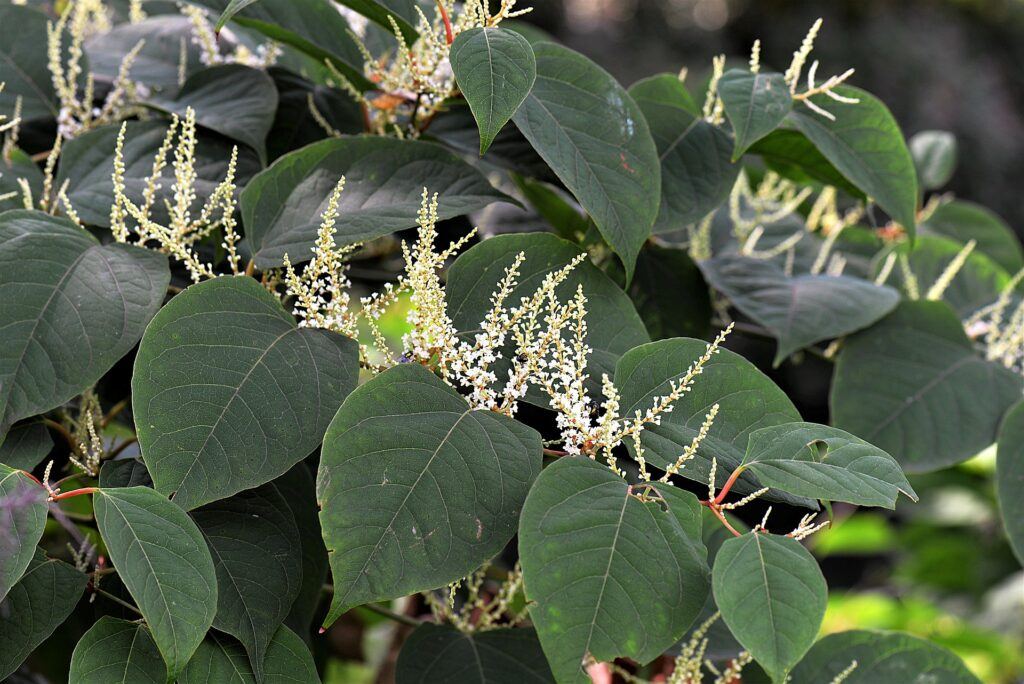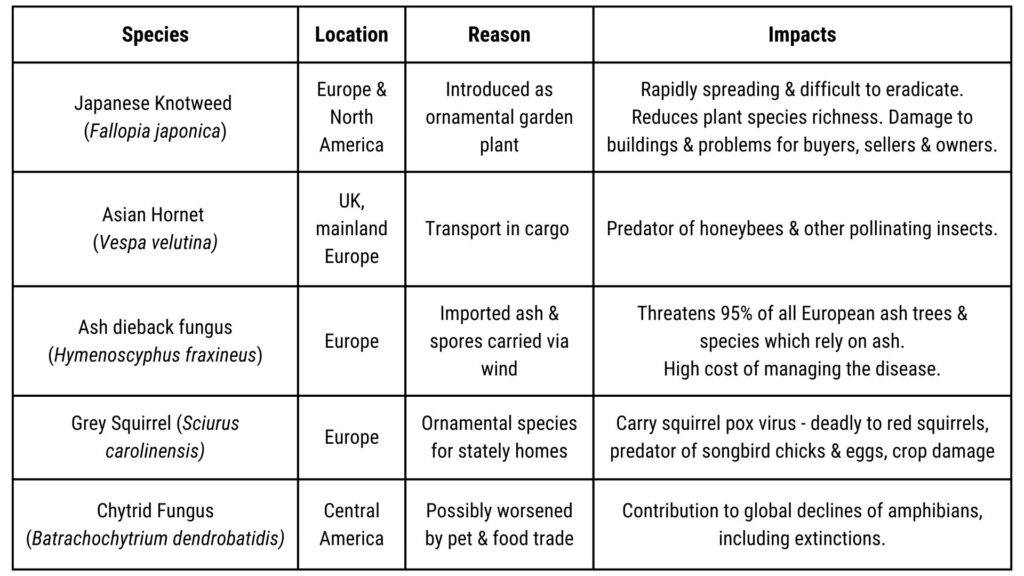Invasive species one of the 5 main drivers of biodiversity loss
What are invasive species?
Invasive species are those which are not native or indigenous to an ecosystem and have a negative impact on that area or other organisms around them. This is different to a non-native species which are usually introduced by humans and do not have the same negative impact with no threat to the area or other organisms.
Invasive species are sometimes introduced accidentally but can also be purposely introduced by humans without realising the consequences. human activity is the biggest reason for the spread of these species.
They are called invasive species because they can:
- adapt very quickly.
- reproduce quickly.
- harm property or the economy.
- harm or kill native plants and animals.
- cause competition for food and resources with native species.
- sometimes bring in diseases.
Examples of invasive species
Common invasive species in the UK include the European rabbit, grey squirrel, muntjac deer, American bullfrog and American mink.

European rabbit (Oryctolagus cuniculus)

Japanese Knotweed (Fallopia japonica)

How much of a problem are invasive species?
In 2019 the Intergovernmental Platform on Biodiversity and Ecosystem Services (IPBES) Global Assessment Report warned that over 1 million species are at risk of extinction, with five main drivers of biodiversity loss: land and sea-use change, direct exploitation of organisms, climate change, pollution and invasive species…
The Kunming-Montreal Global Biodiversity framework agreed at the Convention on Biological Diversity (CBD) in December 2022, has a specific invasive species global target (target 6) for 2030 to reduce the introduction and establishment of invasive species by at least half.
IPBES latest report
In the news recently you may have seen about the new Assessment Report on Invasive Alien Species and their Control. This report was produced based on the findings of IPBES 2019 report and covers the major global threat of invasive species to nature, economies, food security and human health.
Taking over four and a half years and with contributions from 86 experts from 49 countries, the evidence suggests invasive species are a key part in 60% of global plant and animal extinctions and the global cost of invasive species has quadrupled every decade since 1970 ($423 billion in 2019). Over 37000 alien species have been introduced by human activities an at least 3500 of these are considered to be invasive species due to their negative impacts.
The press release for the report states that:
“The severe global threat posed by invasive alien species is underappreciated, underestimated, and often unacknowledged.”
It is thought that in general, there are insufficient measures in place to tackle the growing problem of invasive species. Even though 80% of countries have targets which involve the issue of invasive species, only 17% have laws or regulations in place to enforce them and 45% countries do not invest in the management of invasive species.
The report does advise that if approached urgency then it would be achievable to tackle the issue with effective detection, management and most importantly prevention through increased border biosecurity measures and import controls. It provides governments and stakeholders with evidence and tools to achieve CBD target 6 by 2030.
